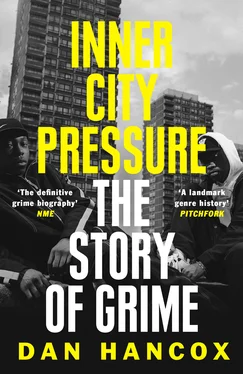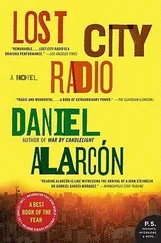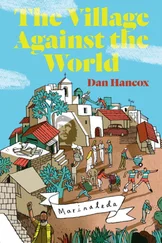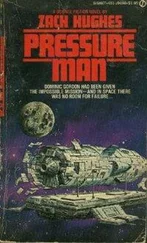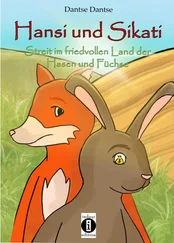1 ...7 8 9 11 12 13 ...20 There’s a unique and productive cultural tension at the heart of grime that comes directly from its inner-London geography, of working-class cultures from the African and Caribbean diasporas intermingling with working-class London slang and culture, rubbing up against each other, borrowing, collaborating and adapting freely and fruitfully. It’s a tension familiar to fans of 1980s British reggae, where the duality is referred to as ‘Cockney and Yardie’, taken from Peter Metro and Dominic’s 1987 tune of the same name. In this song white reggae MC Dominic, born in west London, and black MC Peter Metro, born in Kingston (Jamaica, not Surrey), trade and translate slang from Jamaica (‘yardie’) and east London (‘cockney’).7 Smiley Culture’s 1984 single ‘Cockney Translation’ had performed the same ludic act of cultural elaboration, and become a surprise hit.
Grime has often been described as dazzlingly innovative, alien, groundbreaking, avant-garde, and it is all those things; one factor which explains its newness, perhaps, is not just the individual and collective daring of its creators, but the exact point at which it arrived: in a new millennium, from mostly second- or third-generation black Britons who were just estranged enough from their cultural roots in the Caribbean, or Africa, or both, and far enough along the lineage of unique British dance styles – acid house, jungle, drum ’n’ bass, UK garage – that they could draw from them all, while never being too in thrall to any of them. Just the right amount of respect for what had gone before, and just the right amount of healthy disregard for it, too – a mingling of conflicting and cooperating identities.8 ‘This is something new for your ears,’ runs the chorus of Roll Deep’s 2007 track ‘Something New’, ‘you ain’t heard beats or spitters like this: no American accents, straight English.’
Grime lyrics and vernacular – grime grammar, even – draws on a wide range of roots and influences, but Caribbean English is unsurprisingly prominent, along with grime’s own neologisms, cockney rhyming slang and other pieces of what is known to linguists as MLE (Multicultural London English). There is a minority of grime MCs who use what’s known as a ‘yardie flow’, a proudly Jamaican, often ragga-influenced, gruff, patois-heavy delivery, but a more musical one too – and some, like Riko Dan, who switch in and out of cockney and yardie as they feel the rhythm demands. Meeting cheerful Pay As U Go MC Maxwell D in a pub in Peckham recently, he lists off the MCs who would deliver ‘that extra bashment, yard vibe’ in the grime scene: ‘There’s Riko Dan, myself, Jamakabi, Flow Dan, Armour, Doctor, Durrty Goodz, God’s Gift … but the top MCs in grime were not dancehall, people like Wiley and Dizzee. My style, the dancehall reggae style, grime doesn’t sit on it, the way it’s meant to, because it’s an English way. It actually helped me develop another style, because I started doing less of the bashment style and more of the English style, because I realised the kids, the black kids, weren’t really in tune with their culture no more, it was like an English culture. In my opinion even garage was more dancehall-orientated than grime, it was still rootified. But when grime came along, Dizzee and Wiley, they changed the lyrical style.’ He barks an impression of Dizzee’s halting, staccato flow: ‘“Take that Nokia! Get that, what!” It was like rap, but an English vibe.’
While the roots of grime’s vocal style and a great deal of its slang and idioms travelled across the Atlantic with the Windrush migrants, it’s a telling part of grime’s unique flavour that its accent is so often London English – especially as ‘UK hip-hop’ (a genre in itself, distinct from grime) has often borrowed not just the genre tropes – turntablism, a fetishisation of ‘realness’ and roots – from the United States, but its accent too.9 ‘I thought it would be heavy to sound English,’ Dizzee Rascal told Sound on Sound magazine in 2004. ‘I listen to a lot of US hip-hop, and I know that is how they talk in real life, but a lot of UK hip-hop doesn’t do that. My influences are from jungle, and many of those artists still keep their English accent, and I respected that.’
Indeed, some of Dizzee’s biggest early singles, tracks like ‘Fix Up, Look Sharp’, ‘Stand Up Tall’ and ‘Jus’ A Rascal’ were not only the grimier precursors to hits like ‘Bonkers’, that made him Britain’s first black pop superstar, but in their boisterous, playful style, they also reproduced a kind of east London barrow-boy charisma, even perhaps music hall in its sensibility. How many Top 20 hits can claim to have opened with a battle-cry of ‘Oiiiiii!’ and a Carry On -style cackle? Too few, certainly. Dizzee’s delivery was so English, in fact, that it actually tripped him up on the road to international success. When he toured the US for the first time in 2004, appearing on Los Angeles’ famous rap station Power 106 with DJ Felli Fel, he spat his yelping, double-time flow over classic US rap beats from Brooklyn’s M.O.P. All was well until the end of the slot, when, chatting with Felli Fel on air, there was a telling obstacle: the DJ could literally not understand Dizzee’s accent. He asked Dizzee to repeat the name of his debut album no fewer than three times in a row. Eventually Dizzee, sounding slightly exasperated, just spelled it out: ‘B-O-Y …’
First-wave grime MC Bruza, also from east London, is the name that first comes to mind for ‘cockney grime’: for his especially boisterous delivery, frequent use of cockney rhyming slang, and proud claim that he is ‘brutal and British’. And then there are the white MCs: crews like OT Crew, from Barking, created what you could call ‘geezer grime’ – MCs like Syer B and Dogzilla, repping ‘Barking and Dogenham’, had some underground success with tunes charting their heartfelt quests for the finer things in life: ‘Where’s All The Beer?’ and ‘Where’s The Money?’. Dogzilla is one of those overlooked first-wave MCs who may not be to everyone’s taste, but he is evidence that, in the early days, distinctive voices, flows and vocal styles abounded on pirate radio. Dogzilla flipped the MC’s typical self-aggrandisement to a new level of lyrical honesty, too: ‘I’m obese, white, I smoke too much, I’m a bum, I’m a drunk … I live on strictly takeaways … I like girls in PVC, I support West Ham, UFC … here’s my fat white arse, I bet it makes you laugh.’ The pinnacle of white-boy geezer grime was a track called ‘Straight Cockney’ by an MC called Phenomenon, who it seems no one has heard of since, but whose legend lives on with over a million views on YouTube, where comments mock him to this day.
US rap has had numerous discussions of the phenomenon of the ‘wigga’, and the disproportionate media prominence and industry support given, Elvis Presley-style, to white rappers from Vanilla Ice to Eminem, by an at best cynical and at worst racist music industry. But grime has seen relatively little discussion of racial tension or cultural appropriation. It might be that the genre’s long languishing on the underground meant that, if you were a white DJ or MC taking part in the scene, your participation was implicitly understood to be out of authentic love for the music, rather than calculated profiteering or co-option – the same goes for Mr Wong, a much-loved first-wave MC and producer, the self-described ‘rude boy Chinese wigga’. It might be that the relative lack of racial segregation in Britain’s council estates and poorer areas, compared to the black ghettoised geography of ‘the projects’ in America’s big cities, had something to do with making race less of an issue. It might simply be that – while the likes of Geeneus and Slimzee were instrumental from day one – the biggest talents and crossover stars produced in grime’s early days, for several years, were all black British: Dizzee Rascal, Wiley, Kano, Shystie, Lethal Bizzle. With the exception of Lady Sovereign in 2005 – always a bit of an outsider to the scene in any case – and some years later, Devlin, the few white MCs weren’t the ones getting record deals.
Читать дальше
